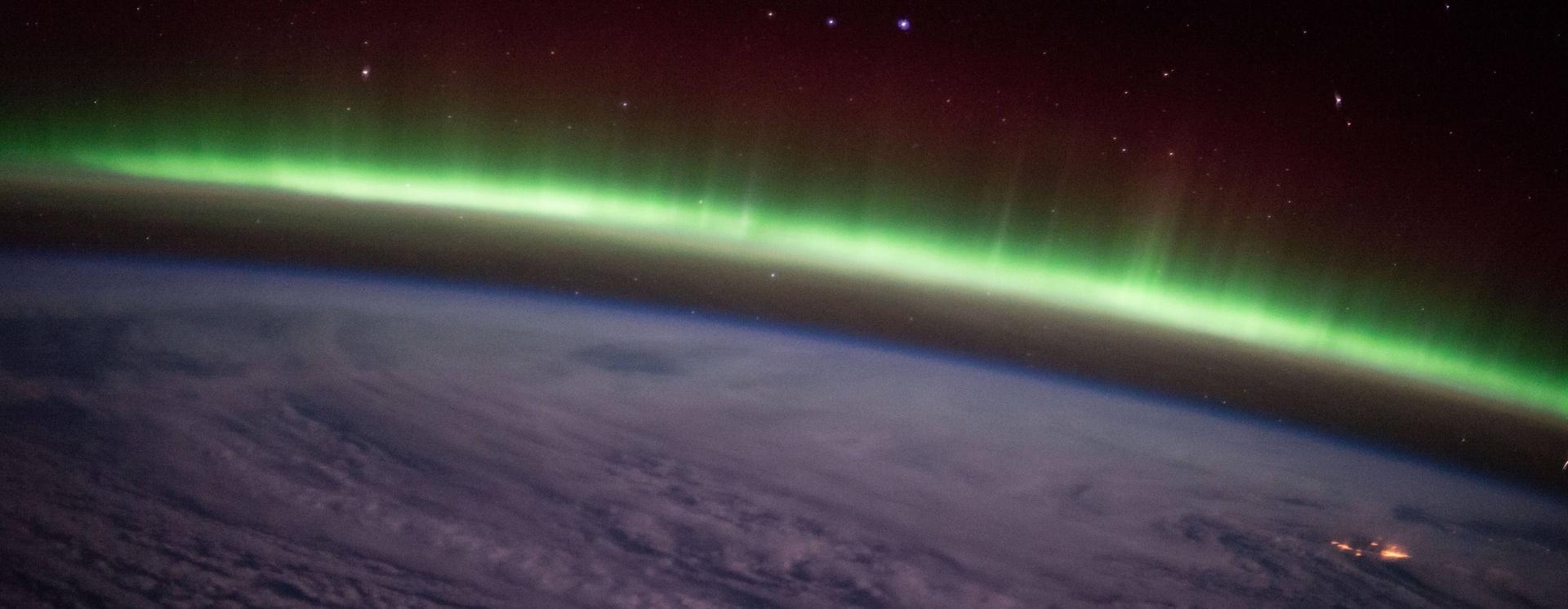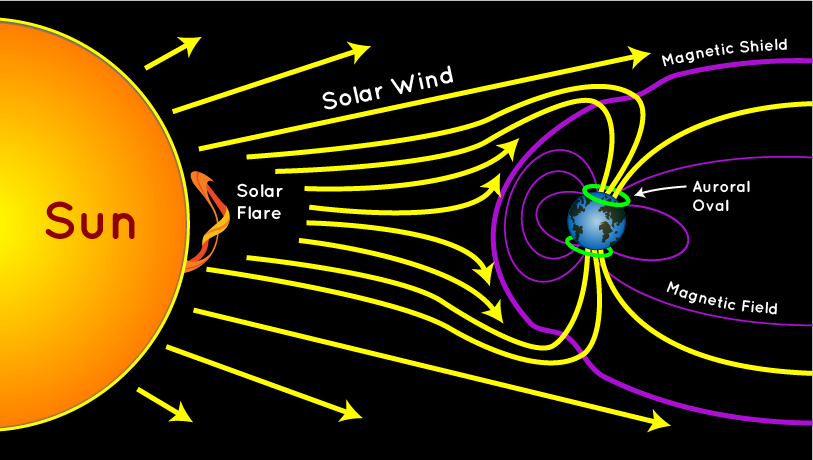How Storms on the Sun Create the Aurora Borealis


Even though aurora light shows in the skies in northern and southern latitudes are best seen at night, they are actually caused by the sun. The sun sends more than heat and light out into the void of space, it puts out a lot of other energy and particles. The earth’s magnetic field deflects a lot of this constant “solar wind” and we don’t even notice it is happening, but when solar storms occur and generate big bursts of energy and particles some of it gets through and travels down the magnetic field lines at the north and south poles into our atmosphere, and voila! Dancing light shows ripple across the sky.

Fun science fact: The magnetic field of Earth is caused by currents of electricity that flow in its molten core at thousands of miles per hour while the earth rotates. These currents are hundreds of miles wide! The powerful magnetic field passes out through the core and crust of the earth and extends into space.
Space weather is created by the sun’s interactions with the earth’s magnetosphere. During solar storms, solar flares and something called a called a coronal mass ejection (CME) can occur. During a CME, the sun essentially burps out a huge bubble of electrified gas that then travels through space at really high speeds.
The magnetosphere can’t deflect all of this electrical energy and some of it gets through at the north and south poles. As the solar electrons enter our upper atmosphere, they encounter atmospheric molecules (oxygen and nitrogen) and “excite” their electrons. When these excited electrons release this extra energy, they do so in the form of photons or light. The color is determined by the element that has been “excited”: oxygen gives off green and red light, nitrogen glows blue and purple.
Earlier this week, southerners got excited because NASA's STEREO and Solar Dynamics Observatory observed a strong CME that might be strong enough to push charged particles far enough into the magnetosphere that they’d be visible as far south as North Carolina.
December 7, 2020 solar storm activity shared by Tony Rice, WRAL's NASA Ambassador.
NOAA's Space Weather Prediction Center issued a Geomagnetic Storm watch for December 9 through 11, but unfortunately, as the cloud of energy passed by NASA's Deep Space Climate Observatory, approximately 1 million miles from Earth Wednesday night at 8:32 p.m. ET, they downgraded their forecast for the intensity of the geomagnetic storm.
According to WRAL, the energy detected was “less than needed to produce a G3 (strong) geomagnetic storm, therefore not strong enough to push auroral activity far enough south for it to be visible from North Carolina and Virginia.”
Robert Rutledge, the lead of operations at the Space Weather Prediction Center, called the disappointing news “not incredibly unusual in space weather forecasting." The silver lining for sky watchers? Conditions in the coming months and years look more favorable, Rutledge said.